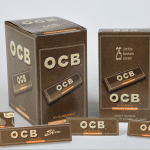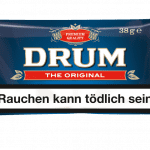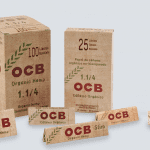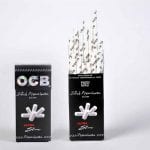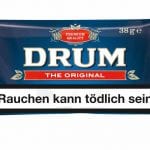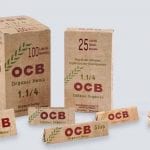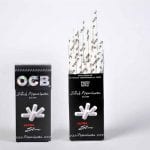Innovation continues even in the time-tested roll-your-own and make-your-own tobacco categories.
By George Gay
Are the roll-your-own (RYO) and make-your-own (MYO) categories innovative and dynamic, do they constitute an appendage of the smoking tobacco division of products that should have atrophied years ago, or do they lie somewhere between those extremes? I tend to the view that these are innovative products, but possibly not in the way that innovation is usually understood. Product innovation is normally the result of changes wrought by the manufacturer, perhaps after formal or informal consultations with consumers. But whereas this sort of innovation is delivered to some extent in the case of RYO and MYO, to my mind, the more important innovations are those that the consumer can conjure up because of the flexible nature of the materials that manufacturers offer.
It hardly needs to be stated that whereas factory-made cigarettes are bought as a product that is ready to consume, RYO and MYO comprise items that have to be put together before they can be enjoyed. And whereas flat-packed furniture, for instance, should be put together only in one way (assuming you want opening rather than just decorative doors), MYO and, especially, RYO can be put together in many different ways—even with panache. Think of the huge number of blends that could be made by combining in various ratios two or more of the main types of fine-cut tobacco on offer—American-blend, Virginia, “zware” and “half-zware”—and then add in what one industry insider described as the “bewildering array” of cigarette papers on offer.
And while it is useful to talk about RYO and MYO as if they are completely different categories, it should be remembered that sometimes the divisions between them become blurred. Indeed, in the U.S., there is no difference, except for the small amount of “shag” that is rolled exclusively. The purpose of MYO cigarettes is to mimic factory-made cigarettes (FMC); so, generally speaking, in Europe MYO tobacco is expanded while RYO tobacco is not. In addition, MYO tobacco has shorter strands than does RYO tobacco and is sold with a lower moisture content. But, as one observer noted, RYO and MYO tobaccos tend to form a spectrum rather than two distinct categories.
In the same vein, it is necessary to bear in mind that it is somewhat misleading to talk of FMC, RYO and MYO smokers because a lot of smokers will smoke both FMCs and RYO, or FMCs and MYO, and, presumably, some will smoke all three.
Staying relevant

This flexibility must be one of the reasons why RYO has been around for so long. During a visit to Imperial Tobacco at the beginning of August, I was told by the company’s senior global category and innovation manager, Ryan Hopkins, that Imperial’s Golden Virginia brand, which is one of the world’s top-selling RYO tobaccos, would next year celebrate its 140th anniversary. And it is something of a baby. Gorgi Keckarovski, the global brand manager with Imperial’s Rizla business unit, told me that the Rizla brand of cigarette papers dates back to 1796.
Republic Technologies International’s (RTI) OCB brand of cigarette papers, meanwhile, has been around for 190 years, during which time it has hugely expanded its reach. RTI’s managing director, Santiago Sanchez, told me that his company’s cigarette paper booklets now come in more than 100 formats—one product for each segment of consumers in the various countries and regions where they are sold—and format diversity must be one measure of innovation.
Of course, in the case of products with such long histories, most of the big manufacturer-introduced innovations have been done, and now it is mainly a matter of making sure that the products are tweaked regularly so as to keep them relevant. And this tweaking is perhaps more important than it appears to be at first sight. Hopkins mentioned that much of what Imperial had done with its RYO and MYO brands during the past 10 years had been aimed at helping smokers stay away from the illegal trade in tobacco products. “As more tax is levied on FMCs, more smokers are looking for cheaper ways to smoke,” he said. “And if you don’t offer them legitimate product categories that offer value, they will buy counterfeit or smuggled brands from the guy in the pub.”
The biggest major innovation, I guess, saw RYO beget MYO, which required the development of filter tubes and the home machine for inserting fine-cut tobacco into the tubes. But there have been plenty of other important changes. The increasing availability of good-quality expanded tobacco, for instance, has helped the MYO category maintain its value proposition. And there is now a movement away from MYO’s traditional tub-and-bucket packaging toward square formats.
Sanchez said that his company had launched the long filter tube—24 mm as opposed to 15 mm—and a shorter, smaller-diameter mini tube. And it had been active in creating table injectors, which were proving very successful in a number of markets, including those in the U.S. and Germany. A good innovation, he added, had been RTI’s “inject-a-roll” machine, which allowed the tubing of any kind of tobacco, including that specially designed only for RYO.
In the U.S., where Republic Tobacco is the biggest distributor of smoking tobacco, cigarette papers, filter tubes and accessories, the company’s marketing director, Tamas Malacsina, said it was constantly working on improving product quality. “The biggest innovation in the past couple of years was the introduction of electric cigarette machines,” he said. “We introduced PoweRoll in 2014, and it quickly became the leader in the electric cigarette machine segment.
On the RYO side, Hopkins mentioned the arrival of the zip-lock pack, which Imperial first launched in the U.K. but has since been rolled out across other markets by Imperial and other companies. As its name implies, the zip-lock pack helps retain the freshness and general quality of the tobacco for longer, an increasingly important factor as tax-induced tobacco price rises mean that smokers try to eke out their tobacco for longer.
Getting slim

Imperial and RTI mentioned the introduction of the biodegradable filter made from paper rather than acetate tow, and the arrival of smaller and slimmer filters to cater to smokers’ tendency to roll thinner cigarettes. And in the same vein, the two companies talked about the launch of unbleached cigarette papers made of various materials, and papers that were extremely light and translucent. Keckarovski said that thinner papers were being launched regularly as smokers, especially those in the West, were tending to roll slimmer cigarettes. For the uninitiated, thinner papers are preferred as cigarettes become slimmer because, otherwise, the taste of the paper can become a noticeable factor in the smoking experience. Meanwhile, Sanchez said that, with OCB Ultimate, Republic had introduced a cigarette paper with a weight of 10 grams per square meter, which he described as the finest paper available.
It is difficult to know why there has been this tendency toward rolling slimmer cigarettes, but it probably has to do in part with smokers wanting to control their consumption and expenditure. Another factor, however, could be the fact that some of these rolled cigarettes are being smoked during short breaks taken outside pubs, and in this case, the development of smaller filters and thinner papers could be seen as regulation-driven innovation.
It is even the case that some regulation can be seen, though not necessarily welcomed, directly as “innovation,” as is the case with the EU’s revised Tobacco Products Directive (TPD2) and its insistence on a minimum 30-gram pack weight for fine-cut tobacco. It is too early to know what effect this change might have on sales because, in the U.K., for instance, retailers have until May next year to sell stock manufactured before the cut-off date for the production of smaller packs, May 2016. But the chances are that it won’t make a lot of difference. As Imperial pointed out, there can be few consumer products that have been the subject of so much legislation as has tobacco, with the consequence that smokers now take it in their stride. Presumably, such a positive attitude will stand them in good stead as the prospect of Brexit raises a host of other unanswerable questions.
Nip and tuck
While a lot of RYO and MYO innovations were introduced some years ago, at least one has its roots in 2015. Michael O’Malley, president of Curved Papers, is not bashful when describing his patent-pending cigarette papers, which, as the name implies, have one curved edge. “I think Curved Papers will rock the world,” he said in an email. “Everybody loves them, and they have a jaw-dropping effect when experienced users use them for the first time. They don’t switch back. I think that in five years half the papers in the world will have a curved edge.”
O’Malley says that Curved Papers solves what he sees as the classic RYO problem. “When you don’t keep your top and bottom edge parallel, the front corner doesn’t tuck,” he explained. “It goes up instead of down. This is the same problem that cut corners solved, but Curved Papers are 10 times better than are cut corners as a solution to this problem, and they offer the additional benefit of making them even easier to roll. Besides eliminating the catching corner completely, they give you a smooth edge that can be rolled straight up every time.” Later, O’Malley made the point that “ease of use is a great thing to sell in any industry.”
And the innovations keep coming. O’Malley said his company was making tobacco wraps, called Curved Blunts, and another type of wrap that was made of cannabis. It was making also biodegradable hemp tubes to replace the plastic tubes that joints come in at cannabis dispensaries in the U.S. and Canada. The cannabis industry was being implemented in some not-green ways, O’Malley said, and his company was not happy with such developments. “We continue to strive to make our packaging more minimal and more green,” he added.
O’Malley first mentioned cannabis in response to questions about the state of the market. Different observers had different takes on the market, but from what they said I would surmise that the overall market for RYO and MYO is broadly flat, with the MYO sector—concentrated mainly in Germany, France and the Benelux countries—perhaps performing marginally better than the RYO sector—concentrated mainly in the U.K., the Netherlands, Germany, France and Italy. But there are some encouraging signs. The profile of the typical RYO and MYO consumer is widening to take in more age and social groups. And Sanchez said that he was starting to see some growth in places such as South America and Asia, though these new markets, he added, still had a long way to go until they reached European levels of consumption.
O’Malley, talking about North America, made the point that as tobacco was going down, cannabis was coming up. Cannabis held the largest potential, he said, though he was quick to point out that, for the time being, legislative changes were not increasing the cigarette papers market significantly since people had been smoking what they wanted to smoke for years. O’Malley said that his main markets for papers were Canada and the U.S. states where cannabis was legal. Then came European head shops. “Next will be the rest of the U.S., when we get our FDA order for our new brand Easy Edge,” he said. “Then the U.K. and the rest of Europe.”
Increasing competition
Of course, if the geographic, demographic and usage aspects of the market are expanding, it is likely, too, that competition will expand as new players see opportunities appear. Hopkins believes that RYO and MYO have always been competitive sectors and that the trend of the past decade has been for more competition. The bigger manufacturers were launching RYO brands with the same names as FMC brands as more smokers moved to RYO.
Sanchez, too, said that these sectors were becoming more competitive. “Newcomers, mainly from Europe, are appearing and, unfortunately, with the only sales argument of being ‘cheap,’” he said. “More worrying news comes from China, not only because in our opinion some of its products do not meet the minimum quality criteria but also because it is the source of fakes that are difficult to control.”
O’Malley took the view that the market situation was complex. Yes, he said, there was intense competition, and there were major players that were very hard to compete with. Also, due to advances in printing, everyone could have their own rolling papers. The white-labeling business was a whole new thing. There was such a strain for innovation that people would try anything.
Not surprisingly, the man who started BeMade, Luc Van de Perre, is keen that more players should enter the cigarette papers market because his company supplies the machinery, technology and expertise to allow companies to set up their own papers manufacturing businesses. He told me in an email exchange that whereas the RYO habit was growing geographically, cigarette papers were made by fewer than 10 manufacturers and were generally made in Europe. “The fact that there are still no producers in the USA still amazes me,” he wrote.
Technology, he says, is key, because while a booklet of cigarette papers seems to be a very simple product, the technology needs to take bulk paper through the processes of watermarking, gumming, interleaving, packing, box making and filling.
Van de Perre, who has spent nearly all of his working life in the tobacco industry, including spells as a papers production manager and process development manager, said that he realized in 2005, the year that he started BeMade, that the next generation of papers machinery had to be format-flexible so that there would be no need for a manufacturer to invest in several machines. “This is not only true when a manufacturer has just one machine, but applies when it has more machines, because the need for capacity in the different formats can vary a lot when a manufacturer is supplying private-label customers,” he said. “This built-in format flexibility should allow also for the creation of new formats with an acceptable level of investment.”
Innovation seems set to continue. As O’Malley said: “This is a little bit of a golden age of innovation, the likes of which has not been seen in rolling papers since the ’70s.”


